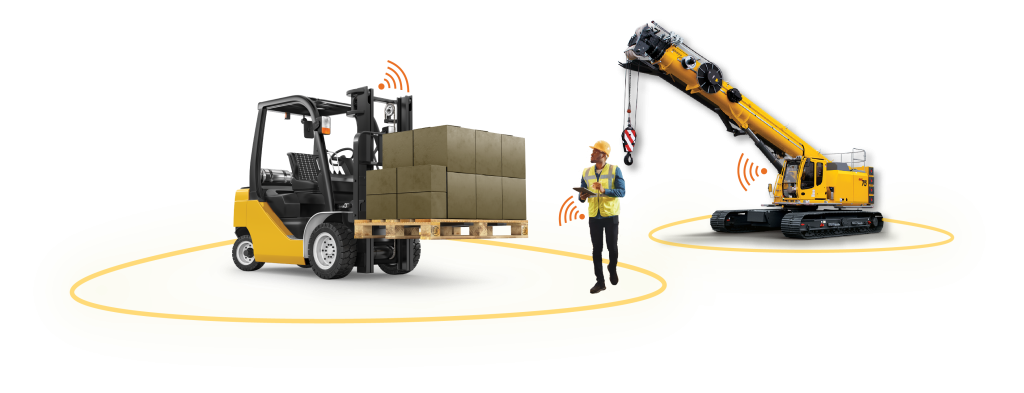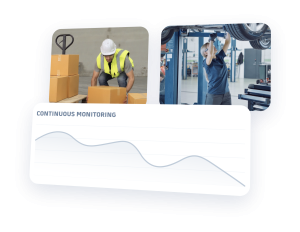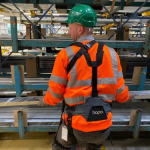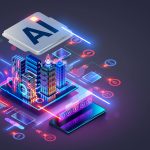Sector - Health & Safety
How AI technology is making the construction sector safer

The most groundbreaking solutions currently changing workplace health and safety are those which harness the power of Artificial Intelligence (AI). The AI wearable device market for health and safety monitoring has been pioneered in the US and is now becoming established in the UK.
New AI health and safety innovations like the WearHealth exoskeleton scanning technology and the Modjoul SmartBelt use AI technology helping to cut workplace accidents and providing a more advanced level of protection for workers at high risk of workplace injury. Central to this technology is the opportunity for employers to collect detailed data that can help inform future health and safety policies on site. Some of these wearable solutions also provide collision avoidance technology which tracks plant machinery on site helping to avoid accidents.

Graham Sharp
Construction sector injury rates
The construction sector has historically been an industry that suffers from high accident and injury rates. In 2022/23 there were an estimated 37,000 workers in the construction sector suffering from a work-related musculoskeletal disorder (MSD). Of those, 2.6% of workers in the construction sector sustained a workplace non-fatal injury with 14% struck by a moving object during the course of their work. Industry leaders know that safety in the sector needs a reset and new wearable technologies are increasingly being seen as the solution.
Anti-collision technology
When people and machinery operate together in close proximity, the likelihood for workplace accidents inevitably rises. Recent figures from the UK Materials Handling Association, clearly show that danger is heightened when people work in environments like construction that use machinery such as forklift trucks, diggers and cranes. AI wearable technology like Modjoul’s SmartBelt, has the ability to communicate with plant operators and workers in the vicinity, while simultaneously measuring ergonomics and environmental factors. Units are installed inside the industrial vehicle to provide an accurate location in real-time within centimetres. Units are also positioned throughout the construction site to provide alerts in high-risk areas such as blind spots or when a crane is operating overhead. Workers on the ground receive haptic proximity alerts from their SmartBelt wearable device alerting them to the presence of a potentially hazardous industrial vehicle. Simultaneously, drivers are alerted to a worker’s presence via a tablet-like display. The devices collect data and measure ergonomic and positioning factors, ensuring that there is detailed data into potential near misses in specific zones.
Exoskeleton suits to reduce injury risk
Exoskeleton suits can be worn for any job that requires repetitive movement whether it be lifting, stretching, or reaching overhead for long periods of time. They provide protection and support the worker by not only easing pressure on the lower back and core, but also helping to lighten the burden put on the body and back from heavy lifting. This helps to combat fatigue and improve endurance on tasks.
Technology providers like WearHealth use video scanning technology which helps match the right exoskeleton suit to the physical task being performed, with the aim of ensuring that the suit can assist in the usual daily tasks without the wearer being exposed to MSDs as a result. A consultant expert along with the recorded data, can identify which is the best suit to fit the task, out of the many that are on the market. A rigorous pre-assessment process is then followed that helps to identify the issues that workers most commonly face in executing the specific activity. The chosen exoskeleton suit is then trialled by a small number of workers and feedback obtained before moving onto implementation. Each suit is designed to keep the worker safe and to protect and support their body to reduce MSDs. Using wearable sensors, the employer can view the before and after impact using data generated from wearing the suit to complete the task.

Challenges for the construction industry
There is no denying that these AI solutions come at a cost and that the initial outlay needs to be justified. However, evidence of use is already proving the value and returns of these solutions not only in reduction of workplace accident and injury, but also in more targeted H&S training and support. The granular data generated by an AI device like the Modjoul SmartBelt uses sensors and metrics to predict if an employee is going to injure themselves if they keep at that pace or behaviours. If they do, the model triggers the wearable to let the employee know to take a break. This advanced technology allows employers for the first time, to focus on areas identified where risk factors are highest. The data can then be tracked post-training to ensure that employees act on the training they have had on risk avoidance. Where weaknesses are identified, wearable technology can be used to help to reinforce correct movement and avoid potential injury.
Introducing new technology can be daunting, but there are industry-leading companies to provide support and guidance every step of the way.
Article submitted by Graham Sharp, Managing Director of Stanley (www.stanleyhandling.co.uk)
Related Articles
More Health & Safety News
- Government finalises RAAC removal programme
18 Nov 25
Definitive timeline for the complete removal of Reinforced Autoclaved Aerated Concrete (RAAC) from all affected
- Construction mental health consultation
29 Oct 25
The Construction Leadership Council (CLC) has launched a mental health in construction consultation.
- “Serious gaps” found in protecting workers from excessive noise
3 Oct 25
Three-quarters of noisy workplaces lacked essential knowledge on maintaining hearing protection equipment, inspections have found.





